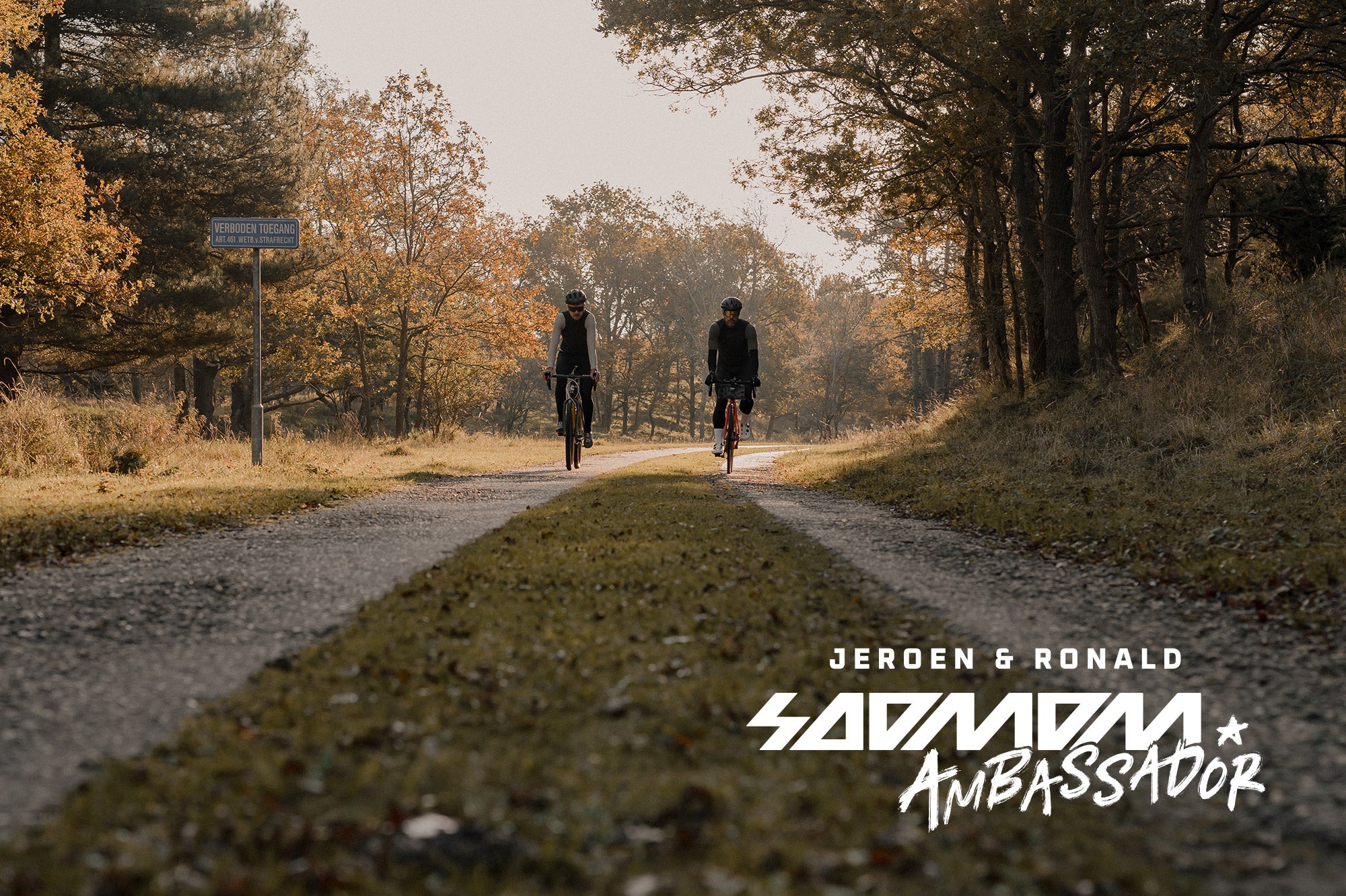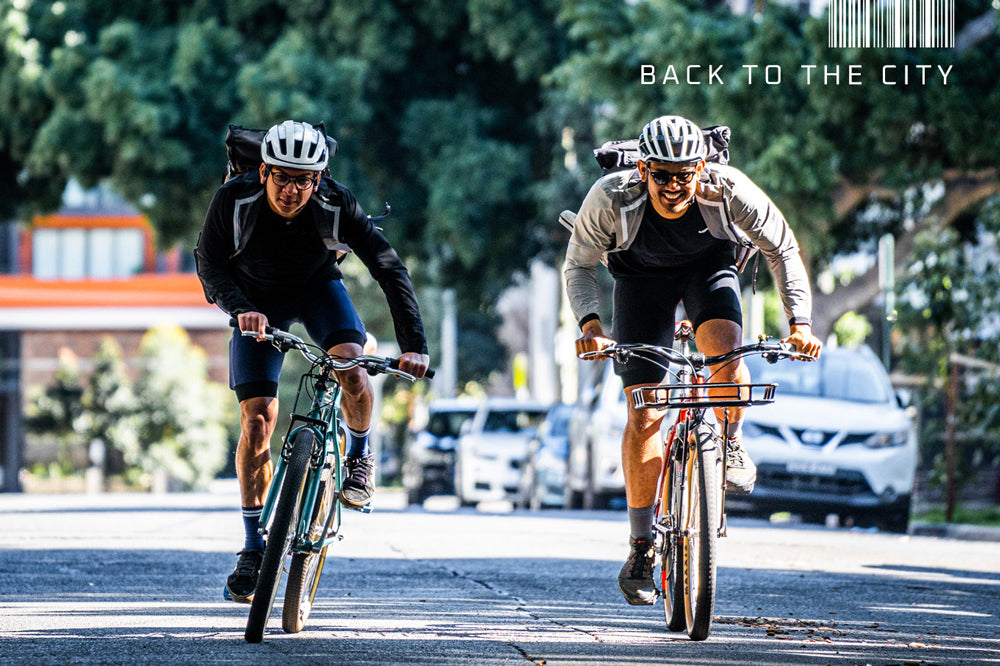Women's cycling tips for high level racing
Words : EJ Macdonald & Charlie Coquillard / Pictures: Charlie Coquillard
Introduction
Wanting to be a better cyclist or compete at higher-level cycling races can be a great goal. Yet, it is hard to achieve due to the rigor, training plan, nutrition, and effort needed to progress to become a better cyclist.
In this article we wanted to showcase you can be at University, have a job, and still manage to perform at a high level in road cycling. We're (or our Ambassador E.J Macdonald rather) giving you all the tips and tricks for cyclist to get started on your= racing journey and how to balance your training load with a normal life.
Cycling at a pro-level
EJ Macdonald has been cycling at an elite-level for some years now, and made it to the World Championship's in Triathlon a few years back. We've asked her a few questions on her life as a cyclist and what it takes to get to the highest level.
We also wanted her to share her tips for female cyclists wanting to get to the top level. Training, nutrition, routine, strength, we've compiled EJ's fantastic insights on being a pro cyclist, and how to become a better performance rider.
Why did you take up cycling?
I was heavily into track and field, swimming, and basketball through primary and high school; however, I grew up riding bikes around the farm due to my dad having a deep history in the sport. In year 10, two friends and I formed a triathlon team to compete at a local country race.
The first weekend I completed the swim leg; however, the next time round, I dusted off Dad's old race bike from the 1960s and finished the bike leg. I was awful at it; however, I loved the skills and fitness required and was hooked from there.
Over the next three years, I worked my way through the ranks in the triathlon scene up to an international level in 2018. What started as a bit of a laugh with mates has turned into a passion that I cannot imagine not being a part of my daily life.

Hey I'm E.J
I'm a former World championship athlete and an exercise Scientist from the university of Wollongong.
I am currently working with cycling team : Team Bridgelane.
I have teamed up with Soomom apparel to create a series of 3 episodes, targeted at preventing and treating common pain cyclists experience, namely knee, back and neck pain.
By giving you access to a comprehensive series of exercise, I hope to keep you healthy on the bike!
Why do you love cycling?
Although I now ride to train and compete, the love for riding has not faded. When I first chose to pursue it as my primary sport, I was worried that the repetitive nature of training would turn the joy of riding into a chore that just had to be done.
What is beautiful is every day you go out is different from the last. You may ride the same route, but the scenery has changed, the weather is different, you may see no one on the ride or cross paths with several friends; some days I choose silence, other days music or podcasts.
It is forever changing and providing new experiences and challenges, both mentally and physically.


Do you have any training tips for femle cyclists wanting to become better?
Whether you are male or female, the goal with cycling is not to embark on a path of self-torture, long hours in the saddle, and plain pasta for dinner; it is to enjoy the process, disregard "stereotypes or limits" in the cycling community and find your "why".
That is the beauty of cycling; the more you put in, the more you get out of it. First and foremost, figure out what you want from the sport. It may be just an outlet to clear the head between school drop-offs and groceries, or it may be a targeted race in the future.
Either way, identify your goal and put in place small stepping stones you can start implementing weekly. For the more dedicated cyclist, this is where a coach comes in handy, structuring training sessions leading up to a race. On the other hand, if your goal is to ride to the park three times a week, that is just as helpful in building the consistency needed.
From here, it is all about balance. Consider your life outside of cycling, commitments, and time availability during the week, and plan your rides around them. Some goals/tools you can use to change up training throughout the week are:
1. Change the route
If you have a regular loop that is predominantly flat, switch it up for something with more elevation. Riding up hills is a love-hate relationship with any cyclist; however, it is one of the most effective ways of developing leg strength and variety in shorter rides.
2. Ride with others
If you have a habit of training solo, see if there is a local group or bunch ride you can join once a week. Not only will it provide great company, but it will enhance your bike handling skills as well.
3. up your average speed
Pick a route you know well and see if you can up your average speed through technique alone. This may come through better cornering, more efficiency descending, or positioning in general on the bike. Wind drag is the main reason for slower average speeds, so consciously think of body position on the bike and minimising your front area.
4. ride in comfort
At no point should cycling be painful or uncomfortable. Training your body to hold the position on a bike takes time and often a lot of work off the bike.
5. a bike fit is key
However, developing core strength, upper body stability, and flexibility in the posterior chain effectively counteract any position-related discomfort felt on the bike.



cycling is forever changing and providing new experiences and challenges, both mentally and physically.
Any tips on how to build a cycling training plan for female cyclists?
As everyone is different, there is never a cookie-cutter "one plan fits all" approach. There are, however, a few key components that everyone can implement when building a training plan.
1. do some testing
The first step is always to understand where you are starting from. It will help aid in establishing training zones and weekly training load optimal for your current level.
Either heart rate-based through a functional threshold test or a power profile ramp test will provide valuable data you can use.
2. Identify long term goals and plan out stepping stones leading up to them
SMART goals are your friend when writing training programs, specific, measurable, achievable, relevant, and time-bound.
Along with goals, it is always handy to have a measurable outcome, such as an increase in threshold, decrease in weight, or improved heart rate zones.
3. Understand the purpose
This works in conjunction with point two, understanding what sort of rider you are and what specific goal you are targeting.
For more endurance-based athletes, it's essential to have a solid aerobic system designed for the longer days in the saddle.
For criterium or sprint-specific riders, targeting the higher outputs and more explosive efforts can be beneficial.
4. Feedback and adjustments
Track progress and adjust your plan to ensure a plateau is not reached; it is crucial to keep data and feedback throughout. This shows if any external factors such as work and family impact fatigue or performance, allowing you to adjust load accordingly.
Keeping notes after sessions on how you performed is also handy for future reference, so you can avoid making similar errors or identifying sessions that work for you.

Can you share your nutrition tips for female cyclists?
Take-home nutrition tips for women;
1. Make sure you're getting enough iron in your diet — 14.8mg per day, though you may need more if you are very active.
2. Use carb drinks in training and riding sessions to aid performance.
3. Don't heavily carb-load before events. Instead, have balanced carbohydrate meals combined with good proteins and fats.
4. Eat around 20g of protein post-exercise to aid muscle recovery.
What are the best cycling apps for training?
The key app for me that I use training is a coach-athlete program called Training Peaks. It allows my coach to upload the weekly ride plans and features that enable me to report back, provide feedback, and upload data from rides.
Alongside Training Peaks, I have recently started using MyFitnessPal and Whoop. MyFitnessPal is a free online diary where I can log daily food intake and keep track of my macronutrients and micronutrients.
Whoop is a watch-like device worn on your wrist that tracks sleep, energy expenditure, recovery, and heart rate variability—both link to Training Peaks, allowing a complete picture of training feedback and analysis.


What are the best unexpected benefits of cycling you have found?
Some unexpected benefits of cycling I have noticed are;
1. Improved cognitive function, concentration, and awareness.
2. Increased confidence in situations you are not accustomed to.
3. Improved hand-eye coordination and balance.
4. Develops the art of working with others but also identifying when you must rely on yourself.
5. Improves self-discipline and time management.
6. It teaches you there is no such thing as limits or comfort zone; the best moments are on the other side of the red line.
Any recovery tips for beginner cyclists you can share?
Some key areas to focus or improve on for recovery are;
1. Replace lost fluids immediately.
2. Get in some high-quality carbohydrates and protein within the golden window of 60 minutes post-training.
3. Stretch it out, or get into a routine of foam rolling. It's vital for avoiding chronic pain and injuries from cycling. My Cycling Pain Management Tips & Tricks series with Soomom will help guide beginners on recovery.
4. Consider other forms of exercise to complement cycling and keep your body adapting and not falling into the same patterns. I've been following Soomom's Yoga for Cyclist's series with Karen and it's been a great complement to my training.
5. Elevate your legs for 5-10 minutes post-ride or workout for improved blood flow around your body.
6. Try out the hot-cold showers method for reducing inflammation and soreness.
7. Prioritise sleep.
8. Avoid overtraining, perfect the art of balance between training too little and training too much.
Conclusion
Whether you are training for your first road race, triathlon, or looking to compete at a national level, following these advices will help you feel better, perform better, and have more fun on the bike.
If you are looking for a more personalised approach to cycling coaching, you can check out EJ's performance coaching page.
Checkout more stories from our Blog for cyclists and follow us on Instagram for tips & tricks.
More Stories
Cycling Brings Two Soomom Ambassadors Together
Social media can help you find people who share the same passion and connect with them. You can build these connections all over the world through our virtual playgrounds, but there are many cases where you can expand those horizons and really meet up in person.
Soomom X Mulga : Limited edition Artist series
Sydney Artist's Mulga loves to create funky and colorful animals, bringing joy to everyone passing by his art. Inspired by his coastal lifestyle, he brings a bright twist to some of the coolest specimens in the animal kingdom.
Back to the City
To celebrate the end of lockdown as people slowly head back to the city in Australia, Soomom wants to highlight an under-appreciated segment of the cycling fraternity: The Courier.



